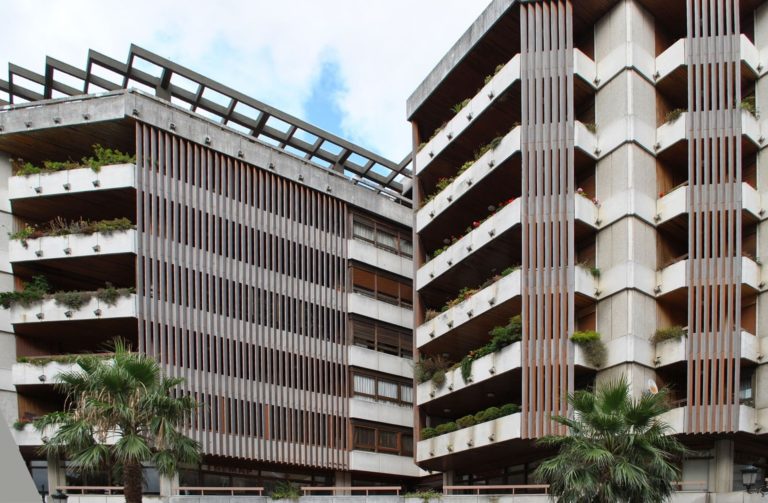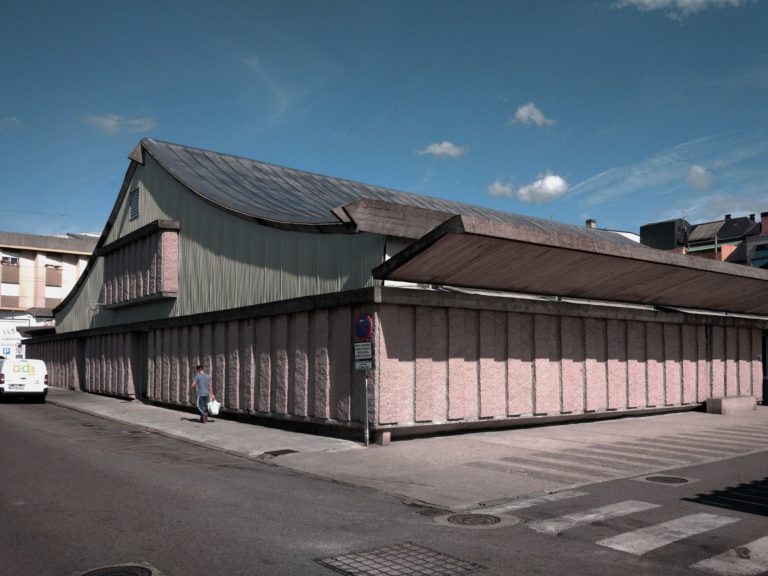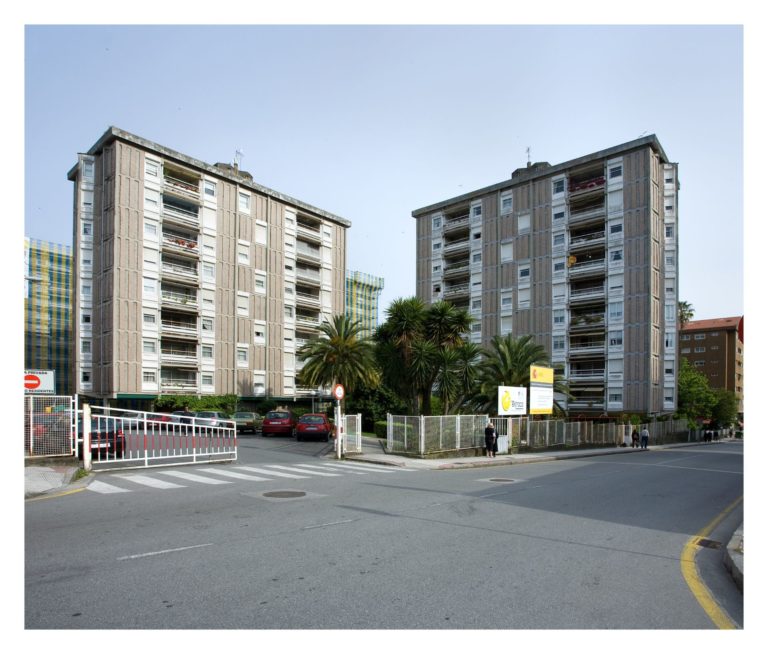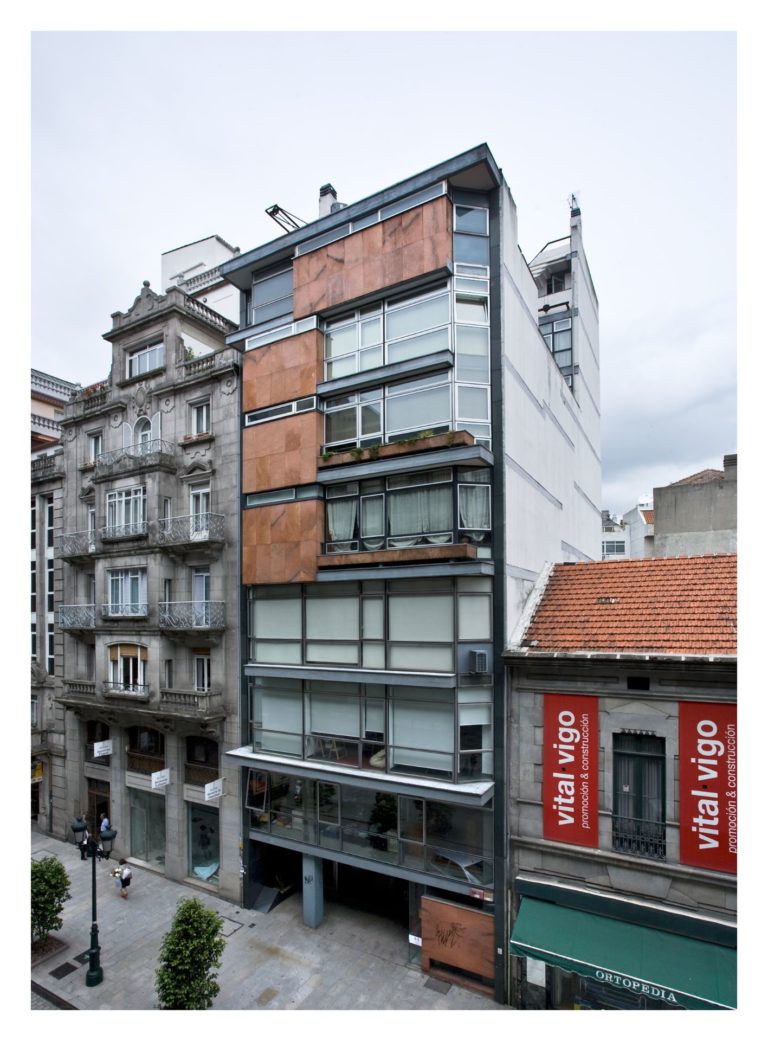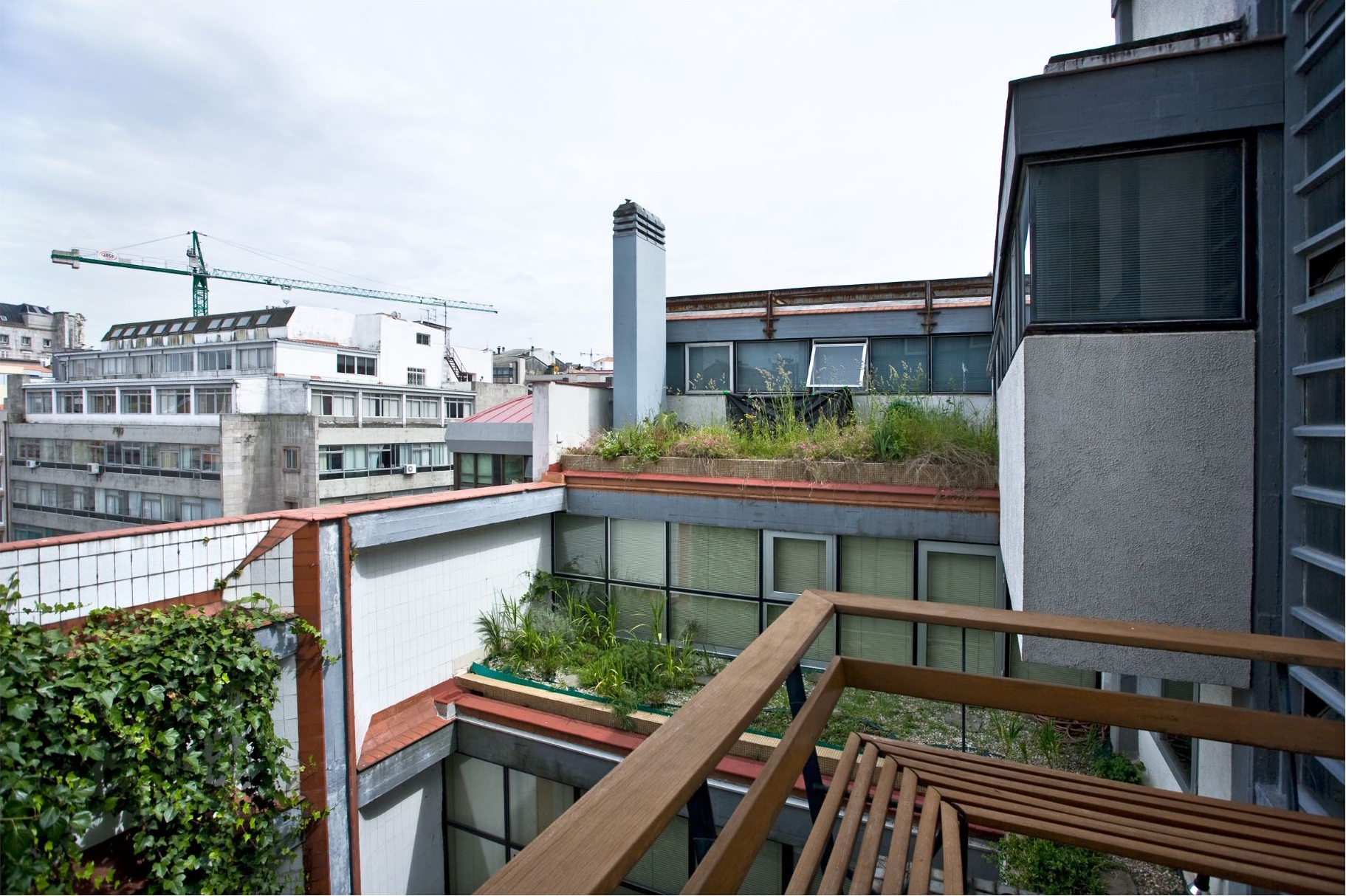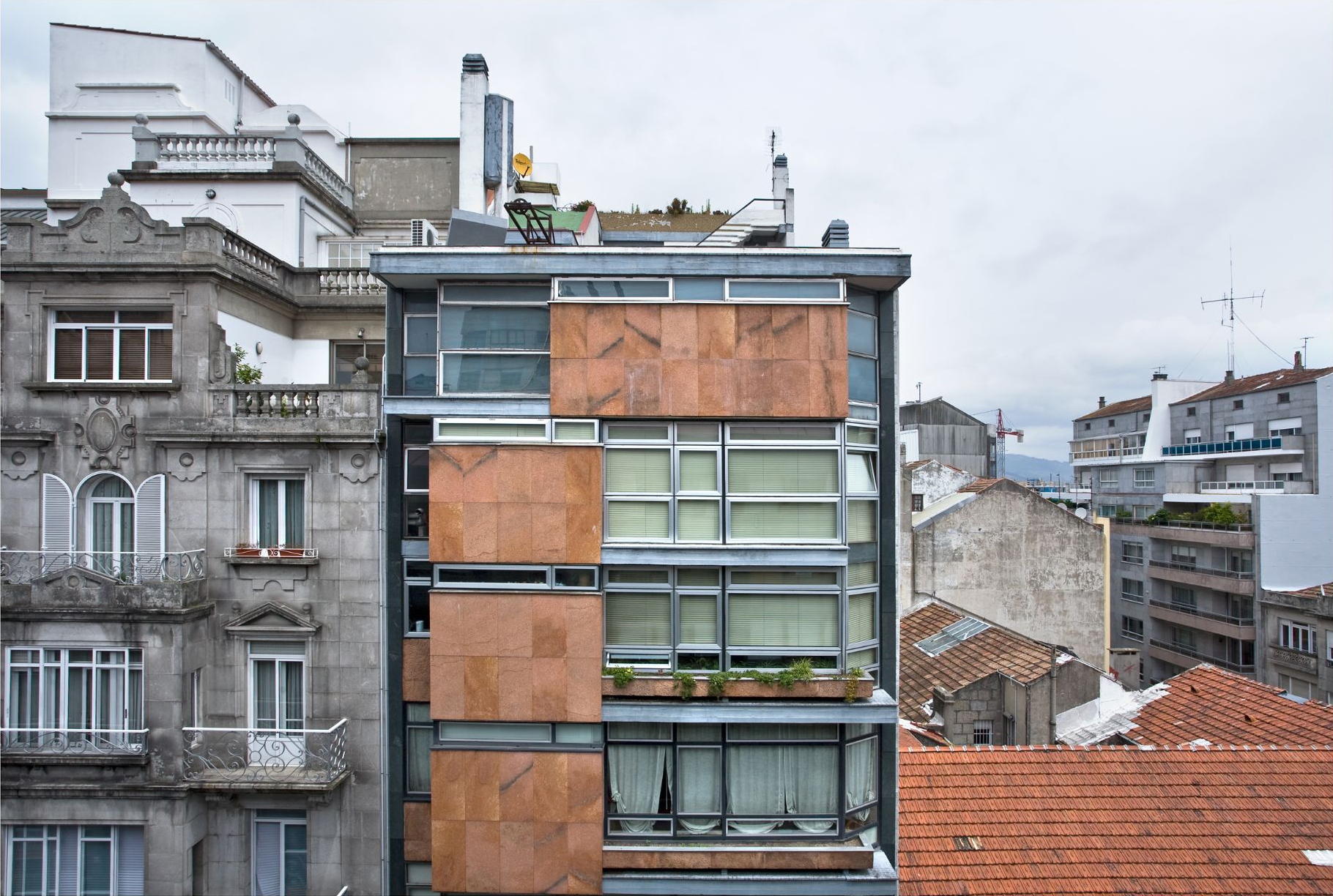Xosé Bar Bóo
Vigo, 1922-Santiago de Compostela, 1994
Xosé Bar Boo was drawn to design from an early age, an interest that his family nurtured: while still a teenager, he designed furniture for his family home that is reminiscent of the work of Marcel Breuer. After finishing secondary school in Vigo, he moved to Madrid to study architecture. After finishing his studies in 1957, he returned to his hometown to start practicing as an architect – unlike other renowned Galician architects like Alejandro de la Sota or Ramón Vázquez Molezún, who remained in Madrid.
Xosé Bar Boo was the founder of the Architects’ Association of Galicia, and also served as dean of the institution. As dean of the Association he carried out important work in education and dissemination on topics as varied as ecology, urban planning and construction, earning a reputation as a great speaker. One of his courses dealt with tradition and technology in stone construction. His designs show ties to traditional Galician architecture through the use of hand-carved stone, although it is put at the service of eminently modern architecture. Stone is used in many of his projects through multiple solutions. In the wholesale markets in O’Porriño and Gondomar, the stone, arranged in large vertical granite sheets (pastas), forms the façade and resolves the contact with the ground without taking on a structural role. In others, such as the Policlínico de la Cíes, stone is used where it that could well have been replaced by industrialised metal elements, as the divisions between the sections of curtain wall. He also employs a similar solution in the Xosé Obreiro housing complex, from 1969. Another of his fields of interest was urban planning, and he tested his ideas in public housing estates such as the residential blocks for members of the military in Pontevedra or in the Bayonne Land Use Plan, among others.
Together with his former schoolmate, Andrés Fernández-Albalat Lois, he revitalised the Galician architectural panorama, introducing the European currents based on the most canonical rationalism: Bar Boo worked mainly in southern Galicia and Fernández-Albalat in A Coruña. Particularly in the early years of his production, Bar Boo exercised strict control over his works, personally overseeing even the smallest detail. These early works include the Plastibar building in Vigo (1957), which represented the introduction of a modern architectural language into the urban landscape of the Galician city. Later on, the Galician economic boom resulted in an uptick in the number of commissions he received, with larger projects and new building types, including markets, clinics, and industrial buildings, etc. Although Bar Boo remained faithful to the rationalist language, he introduced more formal and volumetric freedom, once again drawing inspiration from the avenues that were opening up in European architecture at the time and demonstrating his admiration for the work of Frank Lloyd Wright.
One of his great works, built near the end of his career (in 1991), was the courthouse in A Coruña, where he once again combined stone with a curtain wall. In its interior, the large atrium with skylights and a spiral staircase is one of the most impressive interior spaces he built during his career.
The importance of his work as an architect is combined with his influence as a designer of industrialised construction elements, patenting models for blinds, staircases and a mechanical anchoring system for stone cladding used in ventilated façades.
Bibliography
- GARRIDO FENES, Alicia, La obra de Xosé Bar Boo: una arquitectura a la medida del hombre, Fundación Pedro Barrié de la Maza, A Coruña, 2000.
- GARRIDO FENES, Alicia, “La Arquitectura de Xosé Bar Bóo”, in Revista de Estudios Provinciais 12, 1996, pp. 177-231.
- AA VV, Xosé Bar Boo arquitecto, Colegio Oficial de Arquitectos de Galicia, A Coruña, 1996.
- CAPITEL, Antón, Historia general del arte, Tomo XL, Arquitectura Española del siglo XX, Espasa Calpe, Madrid, 1995, pp. 413.
- SEARA MORALES, Iago, “Bar Bóo, J.”, in Proyecto Galicia, La Coruña, Hércules, 1993, pp. 362-368.
- PARADELA, Antonia, “Los Juzgados de La Coruña, la resistencia de un edificio sobrio”, in Arte y Cemento, 32, 1991, pp. 54-67.
- VILLALAÍN, Damián, “Entrevista con Xosé Bar Bóo”, in Grial 106, 1990, pp. 183-191.
- FERNÁNDEZ MADRID, J., “La piedra y los arquitectos de hoy: dos actitudes”, in Boletín Académico 12, 1990, pp. 8-9.
Author of the biography: Roger Subirà
